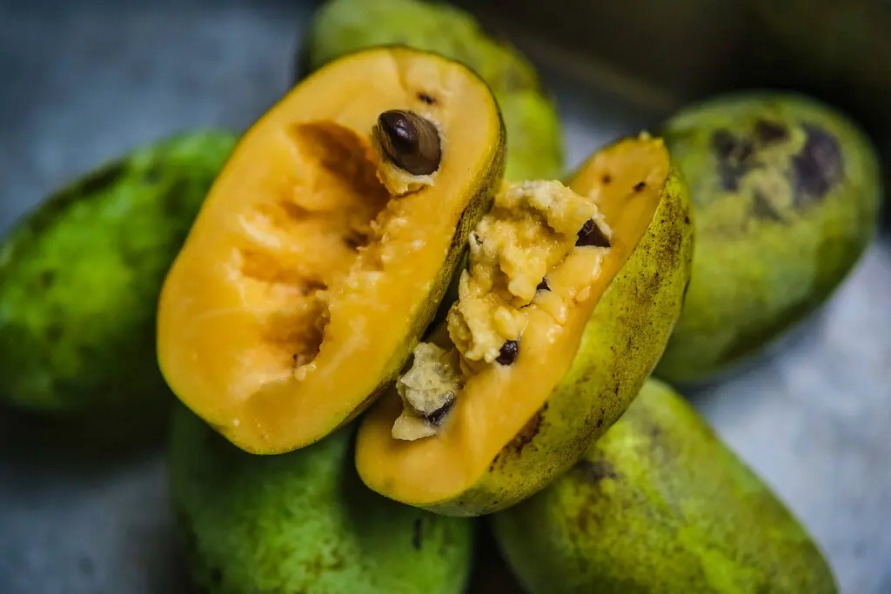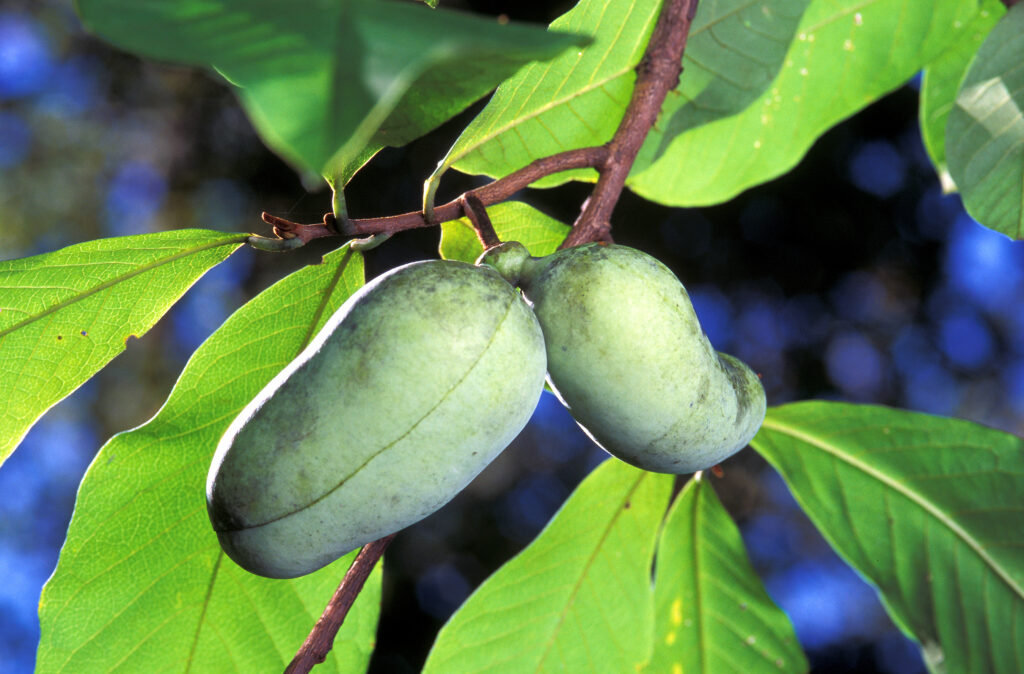
There’s a good chance you’ve never heard of, or ever even tasted, pawpaw fruit. The American Pawpaw fruit is a North American fruit. It grows on the continent’s largest edible fruit tree and can be mainly found in the east, from Florida to southern Canada. It is no longer as common or popular as it once was, but there is renewed interest in this often-overlooked fruit. Pawpaw has a vibrant, tropical flavour that is delicious on its own.
What is PawPaw?
The pawpaw tree (Asimina triloba) is native to 26 states, including Nebraska, Florida, and Ontario. It can reach a height of 25 feet before maturing and giving fruit after four to eight years. This unusual fruit is a member of the custard apple family. The pawpaw flavour is bright, energetic, and downright tropical: a riot of mango-banana-citrus that defies its temperate, deciduous forest roots. Also, similar to banana, pineapple and mango.
“The flavour of pawpaws is strong and distinct”.
The ideal way to eat pawpaw is in the woods, tearing into it with your claws. Slurp the pulp and spit out the seeds after removing the skin. It’s a sticky, sensual, primitive experience.
Origin of Name
“Pawpaw” is a Spanish name given to the fruit by members of conquistador Hernando de Soto’s party during a colonization attempt in the Southeastern United States, according to historical evidence. The fruit was known as assuming by Native Americans.
Pawpaws have had several challenges with public perception. For example, Hoosier banana, and custard apple are all nicknames. That pawpaw knew as papaya in other parts of the World.
The pawpaw is green on the outside with darker speckles. Inside, the soft flesh is either a creamy whitish-taupe or a brighter yellow, with big dark seeds. The fruit is frequently eaten raw or mixed into sweet dishes. Pawpaw seeds and skin should be avoided since they are poisonous to humans when consumed. Cultivated fruit is still scarce in marketplaces and can be costly when compared to most common fruits.

Pawpaw Nutrition
Pawpaws, like other fruits, are healthy and high in vitamins and minerals.
100 grams of ripe pawpaw fruit with peel provides:
- Calories: 80
- Protein: 1.2 grams
- Fat: 1.2 grams
- Carbohydrates: 18.8 grams
- Fiber: 2.6 grams
- Vitamin C: 20% of the recommended Daily Value (DV)
- Riboflavin: 7% of the DV
- Potassium: 7% of the DV
- Magnesium: 27% of the DV
- Manganese: 113% of the DV
- Iron: 39% of the DV
A 100-gram serving of pawpaw provides three times with the vitamin C of an apple and twice the vitamin C of a banana. Pawpaws are also strong in manganese, a mineral required for nutrition metabolism, immunological function, reproduction, skeletal health, and other functions.
Overall, pawpaws are a good supply of vitamins, minerals, and carbohydrates.
You May Like: Why Green Apple Is The Super Fruit You Need In Your Diet?
Benefits of PawPaw
Including pawpaws in your diet may provide a variety of health benefits. However, there has been little research into the impact of pawpaw consumption on human health.
Increasing your produce intake, in general, can benefit your health in a variety of ways. Many studies show that eating more fruits and vegetables may lower your chance of developing health diseases such as heart disease and type 2 diabetes, promote a healthy body weight, improve mental health, and other benefits. If you like pawpaws and have access to them, attempt to incorporate them into your diet. However, keep in mind that pawpaws can be difficult to acquire and are highly perishable, so they are not easily available to the majority of people.
Pawpaw is frequently recognised as a “miracle” therapy for persons suffering from harsh skin diseases including acne and eczema. The oils in the fruit and leaves can help alleviate the inflammation and discomfort associated with arthritic disorders if consumed on a regular basis. Pawpaw can also be used to treat common joint and muscle problems. Furthermore, the pawpaw plant is high in natural chemicals with anti-cancer effects. According to research, pawpaw plant extracts can drastically shrink tumours in cancer patients.
Pawpaw’s other health advantages include its ability to boost energy, and vigour, and help preserve general health.
Difference Between PawPaw vs Papaya
Pawpaw and papaya are easily confused because the latter is also known as pawpaw. The primary distinction is where the fruit is grown: pawpaw is a North American fruit, whereas papaya is native to Mexico and South America’s tropical areas. Botanically, the two are unrelated. Pawpaw is smaller than papaya and has the appearance of an oblong, greenish-brown mango. While both have a tropical flavour, pawpaw is more like banana and papaya is more like mango. Pawpaw seeds are not edible, although papaya seeds are.
Conclusion
Pawpaws are one-of-a-kind, nutritious fruits with a tropical, sweet flavour.
They are high in minerals such as magnesium, vitamin C, and manganese, and they contain a range of plant chemicals that may have anti-inflammatory and antioxidant properties. If you are fortunate enough to obtain some pawpaws, it is better to consume them fresh or combine them into meals such as ice creams and sorbets.
Read Next Blog:
Kakadu Plum: History, Nutrition, Benefits and Side Effects







